Downloads Centre
Download essential resources for account management, payments and transactions.
Download Centre
Key Facts Statement
- Classic Current Account - Key Facts Statement
- Max Saver Account - Key Facts Statement
- Savings Account - Interest Bearing - Key Facts Statement
- Savings Account - Non Interest Bearing - Key Facts Statement
- Twin Benefit Account - Key Facts Statement
- Auto Loan - Key Facts Statement
- Home Loan - Key Facts Statement
- Personal Loan - Key Facts Statement
- Fixed Deposits - Key Facts Statement
- Classic Credit Card - Key Facts Statement
- Infinite Credit Card - Key Facts Statement
- Platinum Credit Card - Key Facts Statement
Privacy Notice
Risk Disclosures
- NBF Fixed Deposits - Risk Disclosures
- NBF Auto Loan - Risk Disclosures
- NBF Classic Credit Card - Risk Disclosures
- NBF Current Account - Risk Disclosures
- NBF Fixed Deposit - Risk Disclosures
- NBF Home Loan - Risk Disclosures
- NBF Infinite Credit Card - Risk Disclosures
- NBF Max Saver Account - Risk Disclosures
- NBF Off Plan Home Loan - Risk Disclosures
- NBF Personal Loan - Risk Disclosures
- NBF Platinum Credit Card - Risk Disclosures
- NBF Revolving Overdraft - Risk Disclosures
- NBF Savings Account with Interest - Risk Disclosures
- NBF Savings Account without Interest - Risk Disclosures
Schedule of Charges
Terms & Conditions
- General Terms and Conditions - Personal Loan
- Consumer Terms
- NBF Debit Card Terms and Conditions
- AFNIC – NBF Credit Life Insurance Policy Terms & Conditions
- Personal Banking - Consumer Terms
- Credit Cards Terms & Conditions
- Mortgage Shield Policy Terms & Conditions
- Motor Insurance - Free Home Contents Offer Terms & Conditions
- NBF - Aani Terms & Conditions
- NBF Insurance Terms & Conditions
- NBF Privacy Notice Disclosure
- NBF Referral Programme Terms & Conditions
- NBF Rewards - Terms and Conditions
- Oman Insurance - Motor Terms and Conditions
- Property Shield Policy - Terms and Conditions
Other Documents and Forms
- Account Opening Form - Personal Banking
- Account Service Request Form
- Account Transfer
- Advances in Current Account and/or Loans
- Balance Transfer and EZ Draft Facility Form
- Cardholder Dispute Form
- Credit Card Application Form
- Fixed Deposit Application Form
- LK - Visa Complaint and Visit Dispute Form
- NBF Consumer Products and Services Application Form
- NBF Customer Referral Form
- NBF Gold Bar Campaign Additional Terms and Conditions
- New Customer Referral Programme - Undertaking
- Remittance Request
- Remittance Request
- Safe Deposit Locker Application Form
- Supplementary Credit Card Application Form
Product Comparison Sheet
User Guides & FAQs
Application Forms & Other Documents
- Account Opening Form for Non-Individual Entities
- Account Opening Form for Non-Individual Entities - Digital Form
- Account Transfer
- Advances in Current Account and/or Loans
- Application to Amend a Letter of Credit
- Application to Amend a Letter of Guarantee
- Application for Import Loan
- Application for Shipping Guarantee / Delivery Order
- Application for Issue of Guarantee
- Application to Issue An Irrevocable Documentary Credit
- Account Service Request Form
- Authorisation Letter for Business Debit Card
- Authorisation Letter for Collection of Documents and Callback Verification
- Business Account Package - Supplementary Application Form
- Business Credit Card Application Form
- Business Debit Card Declaration Form
- Corporate Account Package – Supplementary Application Form
- Corporate Supplementary Form - Swift Request
- Direct Import/Local Delivery/Advance Payment - Trust Receipt Loan Request
- Export Collection Lodgment
- Export Letter of Credit Document Presentation
- Fixed Deposit Application Form
- Indemnity Form - Email Advices Request
- Invoice Discounting Cover Letter
- NBF Business Banking Value Accounts_Authorisation Form
- NBF Business Banking Value Accounts Comparison Sheet
- NBF Business Banking Value Accounts - Consumer Products and Services Application Form
- NBF Business Banking Value Accounts - Supplementary Application Form
- NBF Business Banking Value Package Account - Acknowledgement and Consent Form
- NBF Consumer Products and Services Application Form
- NBF Corporate Access Application Form - Non-Individuals
- NBF Elham - Account Opening Form for Emirati Business Owners
- Remittance Request
- Remittance Request
- Request to Discount Cheques
- Safe Deposit Locker Application Form
- Sanctions & Embargoes Declaration Form
- Subscription Application for Aani Merchant Collection Services
- Special Cheque Book Requisition Form
- Subscription Application for Aani Merchant Collection Services
- Supplementary Credit Card Application Form
- Value Added Services Application
- W8 BEN E Form – Certificate of Status of Beneficial Owner for United States Tax Withholding and Reporting (Entities)
- W9 Form – Request for Taxpayer Identification Number and Certification
Key Facts Statement
- NBF Business Banking Value Account Essential - Key Facts Statement
- NBF Business Banking Value Account Executive - Key Facts Statement
- NBF Business Banking Value Account Preferred - Key Facts Statement
- NBF Business Banking Value Account Prime - Key Facts Statement
- NBF Business Current Account - Key Facts Statement
- NBF Business Elite Account - Key Facts Statement
- NBF Business Etisalat Value Account - Key Facts Statement
- NBF Business Lite Account - Key Facts Statement
- NBF Business Plus Account - Key Facts Statement
- NBF Business Priority Account - Key Facts Statement
- NBF Overdraft - Key Facts Statement
- NBF Term Deposit - Key Facts Statement
Risk Disclosures
- NBF Business Banking Value Account Essential - Risk Disclosures
- NBF Business Banking Value Account Executive - Risk Disclosures
- NBF Business Banking Value Account Preferred - Risk Disclosures
- NBF Business Banking Value Account Prime - Risk Disclosures
- NBF Business Current Account - Risk Disclosures
- NBF Business Elite Account - Risk Disclosures
- NBF Business Plus Account - Risk Disclosures
- NBF Business Priority Account - Risk Disclosures
- NBF Etisalat Value Account - Risk Disclosures
- NBF Lite Account - Risk Disclosures
- NBF Overdraft - Risk Disclosures
- NBF Term Deposit - Risk Disclosures
Schedule of Charges
Terms & Conditions
Forms
Key Facts Statement
- NBF Auto Loan - Key Facts Statement
- NBF Business Banking Value Account Essential - Key Facts Statement
- NBF Business Banking Value Account Executive - Key Facts Statement
- NBF Business Banking Value Account Preferred - Key Facts Statement
- NBF Business Banking Value Account Prime - Key Facts Statement
- NBF Business Current Account - Key Facts Statement
- NBF Business Elite Account - Key Facts Statement
- NBF Business Etisalat Value Account - Key Facts Statement
- NBF Business Lite Account - Key Facts Statement
- NBF Business Plus Account - Key Facts Statement
- NBF Business Priority Account - Key Facts Statement
- NBF Classic Credit Card - Key Facts Statement
- NBF Current Account - Key Facts Statement
- NBF Fixed Deposit - Key Facts Statement
- NBF Home Loan - Key Facts Statement
- NBF Infinite Credit Card - Key Facts Statement
- NBF Max Saver Account - Key Facts Statement
- NBF Off Plan Home Loan - Key Facts Statement
- NBF Overdraft - Key Facts Statement
- NBF Personal Loan - Key Facts Statement
- NBF Platinum Credit Card - Key Facts Statement
- NBF Revolving Overdraft - Key Facts Statement
- NBF Savings Account with Interest - Key Facts Statement
- NBF Savings Account without Interest - Key Facts Statement
- NBF Term Deposit - Key Facts Statement
- NBF Twin Benefit Account - Key Facts Statement
Risk Disclosures
- NBF Auto Loan - Risk Disclosures
- NBF Business Banking Value Account Essential - Risk Disclosures
- NBF Business Banking Value Account Executive - Risk Disclosures
- NBF Business Banking Value Account Preferred - Risk Disclosures
- NBF Business Banking Value Account Prime - Risk Disclosures
- NBF Business Current Account - Risk Disclosures
- NBF Business Elite Account - Risk Disclosures
- NBF Business Etisalat Value Account - Risk Disclosures
- NBF Business Lite Account - Risk Disclosures
- NBF Business Plus Account - Risk Disclosures
- NBF Business Priority Account - Risk Disclosures
- NBF Classic Credit Card - Risk Disclosures
- NBF Current Account - Risk Disclosures
- NBF Fixed Deposit - Risk Disclosures
- NBF Home Loan - Risk Disclosures
- NBF Infinite Credit Card - Risk Disclosures
- NBF Max Saver Account - Risk Disclosures
- NBF Off Plan Home Loan - Risk Disclosures
- NBF Overdraft - Risk Disclosures
- NBF Personal Loan - Risk Disclosures
- NBF Platinum Credit Card - Risk Disclosures
- NBF Revolving Overdraft - Risk Disclosures
- NBF Savings Account with Interest - Risk Disclosures
- NBF Savings Account without Interest - Risk Disclosures
- NBF Term Deposit - Risk Disclosures
- NBF Twin Benefit Account - Risk Disclosures
Terms & Conditions
FATCA & CRS Compliance
- Common Reporting Standards Declaration Tax Residency Self Certification
- CRS Entity and Controlling Person - Tax Residency Self-Certification Form
- CRS Individual - Tax Residency Self-Certification Form
- Form Guidance – Entity Self Certification
- US FATCA Addendum and Declaration – Self-Certification Form
- W8 BEN E Form – Certificate of Status of Beneficial Owner for United States Tax Withholding and Reporting (Entities)
- W9 Form – Request for Taxpayer Identification Number and Certification




